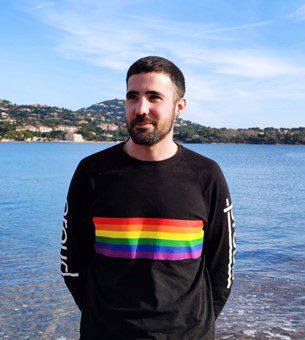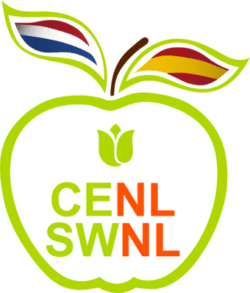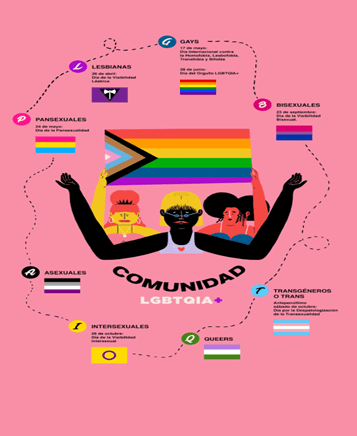We are Lety and Alberto, and we met on a Diversity and Inclusivity committee at a research center. During the time we spent together, we realized that despite the amount of information available, sometimes information on LGBTQ+ issues is scarce in the workplace. That’s why in this blog we decided to expand your knowledge, with an introduction to some important aspects of LGBTQ+ issues, and explaining why this information is relevant to people working in science, and outside of science, regardless of whether it’s in academia or industry.
The LGBTQ+ Alphabet
We want to talk to you about gender inclusivity and some queer terminology that maybe some of you have heard but don’t quite know how to use. We will start with something quite simple, maybe you will be familiar with the letters LGBTQ+ (or LGBT, LGBTQ or LGBTQ+) that are used for the collective of diversity in sexual orientation and gender identity. These are acronyms that represent the different sexualities as well as genders, it can be said that it is a dynamic acronym, which grows and incorporates when necessary new letters [1].
So here we go, to explain the letters one by one. An important detail the letters can change depending on the language, here we can talk about the letters in Spanish, or English, which is usually the most used. So the acronym in English would be LGBTQ+, and in Spanish LGBTQIA+. The letters group different groups related to sexual orientation (Lesbian, Gay, Bisexual, Asexual), gender identity or expression (Transgender, and Queer), or biological characteristics (Intersex). Q is also used for “questioning” in English, which we might use as discovering and experimenting, if we are still unsure. When we think of the celebration of Pride, many people associate it as “Gay Pride”, but it is important and necessary to distinguish and understand the meaning of each group, and to understand that it is the celebration and vindication of rights for the whole collective. As acronyms cannot group all possible variations in the spectrum of sexual orientation and gender expression, the symbol + is used to represent in an inclusive way other terms that do not have a letter in the acronym. You can find a range of resources on terminology at the end of the entry.
It would be nice to know a few more terms that can help us better understand people who belong to the gay, LGBTQ+ or queer community. For example, the term Queer is an umbrella term that is also used to speak in a general way when referring to a member of the LGTBQ+ collective. Examples of umbrella terms that encompass various collectives/identities can be found here[2].
The acronym LGBTQ+ was born to make visible the different groups it represents. Currently the use of the acronym LGTBQIA+ is more widespread in order to be as inclusive as possible. However, when we talk about a particular issue that affects only one of the groups included, it is ideal to use only the letter/name of the group in question. The term Queer is also widely used, because it is shorter and faster than using all the letters, but it is more correct to use the acronym.
LGBTQ+ and science, why?
As scientists, our job is not only to generate evidence to advance knowledge; we also have a social role to play. Unfortunately, academia or industry are not always diverse and inclusive places for everyone. Did you know that LGBTQ+ scientists suffer more discrimination in their work compared to the rest of the group? [3, 4]. This is not a surprise, as it is a problem that has been documented on a structural level in Europe [5] and the rest of the world. These discriminations are also documented in different population groups; for example, the gender gap indiscriminately affects women, also in science [6]. This discrimination can also be extrapolated to other social groups or minorities [7].
To combat discrimination, we must learn and raise awareness of the problems that LGBTQ+ people face in the workplace. With this mission, different associations and networks of scientists have been formed. For example, in Spain we have PRISMA (Asociación para la Diversidad Afectivo-Sexual y de Género en Ciencia, Tecnología e Innovación [8]), which is an association with the goal of eradicating LGBTQ+ discrimination in science, and in turn, also serves as a community for LGBTQ+ scientists. The association also offers many outreach resources [9, 10]. Different networks and networks (online and offline) exist, such as Pride in STEM [11], Queers in Science [12]. Even in the STEM world, the International Day of LGBTQ+ scientists in science is celebrated in November [13]. In the corporate world there are also, for example, Workplace Pride [14] in the Netherlands. All these associations and networks are essential, for example, to make future role models in scientific fields visible.
For some time now, our regular scientific journals have echoed these issues, publishing from time to time articles on various LGBTQ+ topics. For example, different resources on how LGBTQ+ scientists would like to be included in their workplaces [15], how to create a diverse and inclusive institution [16], what challenges people working in science face [17], how to be a good ally [18], or about pride and science [19]. These resources are essential for everyone to become aware of these issues.
Also of note, as scientists we are responsible for making our research inclusive [20]. This is more applicable to medical and social studies, but can also be extrapolated to other fields [21].
References
[1] Terminología LGBTQ+ (Stonewall, ONG de derechos LGBTQ+ en el Reino Unido): https://www.stonewall.org.uk/list-lgbtq-terms
[2] Identidades umbrella / paraguas en el colectivo LGBTQ+: https://www.depts.ttu.edu/lgbtqia/AllyshipandIdentities/identityumbrellas.php
[3] Discrimination drives LGBT+ scientists to think about quitting (Nature) https://www.nature.com/articles/d41586-019-02013-9
[4] Exploring the workplace for LGBT+ physical scientists (Royal Society of Chemistry, UK)
https://www.rsc.org/globalassets/04-campaigning-outreach/campaigning/lgbt-report/lgbt-report_web.pdf
[5] A long way to go for LGBTI equality (European Union agency for fundamental rights) https://fra.europa.eu/en/publication/2020/eu-lgbti-survey-results
[6] The STEM Gap: Women and Girls in Science, Technology, Engineering and Mathematics (AAUW) https://www.aauw.org/resources/research/the-stem-gap/
[7] Discrimination still plagues science (Nature) https://www.nature.com/articles/d41586-021-03043-y
[8] PRISMA: Asociación para la Diversidad Afectivo-Sexual y de Género en Ciencia, Tecnología e Innovación https://prismaciencia.org/
[9] PRISMA recursos https://prismaciencia.org/recursos/
[10] 10 medidas para la igualdad LGTBIQA+ en centros de investigación y entornos de Ciencia, Tecnología e Innovación https://prismaciencia.org/wp-content/uploads/2022/10/10medidasPRISMA_guia_implementacion.pdf
[11] Pride in STEM https://prideinstem.org/
[12] Queers in Science https://www.instagram.com/queersinscience/
[13] LGBTQ+ Stem day https://prideinstem.org/lgbtstemday/
[14] Workplace pride https://workplacepride.org/
[15] How LGBT+ scientists would like to be included and welcomed in STEM workplaces (Nature) https://www.nature.com/articles/d41586-020-02949-3
[16] What does it take to make an institution more diverse? (Nature) https://www.nature.com/articles/d41586-018-05317-4
[17] On being LGBTQ+ in science – yes it matters, and here’s why (Elsevier) https://www.elsevier.com/connect/on-being-lgbtq-in-science-yes-it-matters-and-heres-why
[18] LGBTQI+ allyship in academia (Nature Reviews) https://www.nature.com/articles/s43017-021-00185-5
[19] Diversity: Pride in science (Nature) https://www.nature.com/articles/513297a
[20] How to integrate sex, gender, and intersectional analysis into research https://researcheracademy.elsevier.com/communicating-research/inclusion-diversity-researchers/integrate-sex-gender-intersectional-analysis
[21] Inclusive Research with LGBTIQA+ Groups (Springer) https://link.springer.com/referenceworkentry/10.1007/978-3-030-48277-0_77-1
Can you help us to become more? Become a member and participate. Spread our word on the networks. Contact us and tell us about yourself and your project.

beba arlanzon
Master student in Biomedical Sciences, Neuroscience and Public Health International
She holds a degree in Philology and a PhD in Translation from the University of the Basque Country. She is currently in a period of professional transition oriented towards communication.

Alberto Gil Jiménez
PhD candidate at the Netherlands Cancer Institute
My name is Alberto. I studied Physics and Chemistry at the Autonomous University of Barcelona, and Bioinformatics at the VU University Amsterdam. I am currently doing a PhD at the Netherlands Cancer Institute (Amsterdam), where I am investigating the effects of immunotherapy and chemotherapy in urological cancer. For this I use bioinformatics and computational biology tools modeling protein and DNA/RNA sequencing data, obtained from human samples, which I integrate with clinical data.

